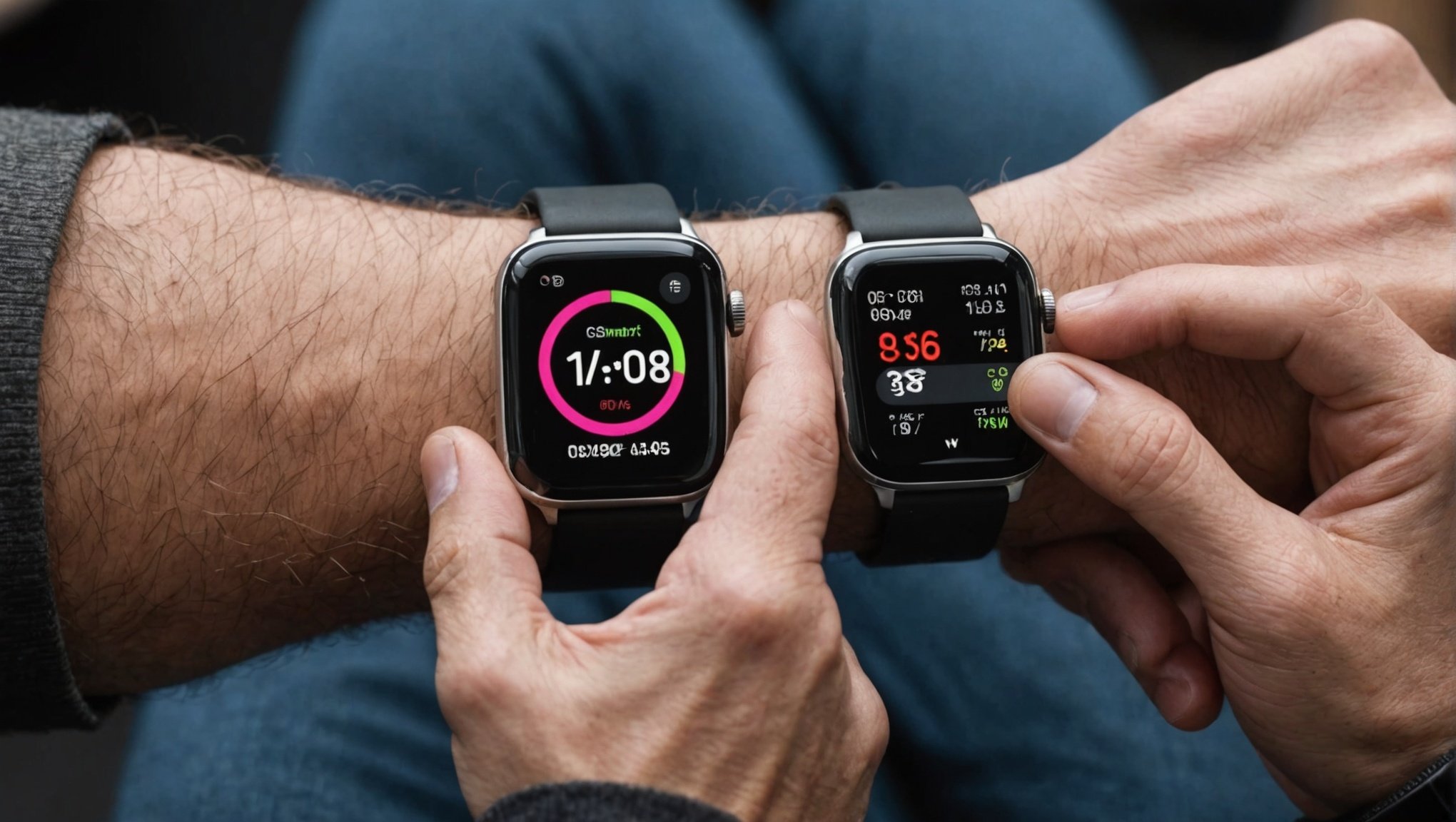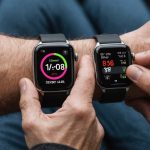Overview of SpO2 Functionality in Smartwatches
In recent years, the evolution of SpO2 technology has greatly enhanced smartwatch health tracking. Smartwatches utilise photoplethysmography (PPG) sensors to measure blood oxygen levels. This process involves emitting light through the skin and measuring how much light is absorbed by the blood. The amount of absorbed light reflects the level of oxygen saturation, known as SpO2 measurement.
Monitoring blood oxygen levels is crucial for understanding overall health. Low SpO2 levels can indicate respiratory issues or other underlying health problems. Through SpO2 measurement, smartwatches provide users with immediate insights into their oxygen levels, allowing for timely interventions if abnormalities are detected.
This might interest you : Unlocking Better Sleep: How Smart Bed Technology Enhances Sleep Quality and Health Tracking
The importance of SpO2 monitoring extends beyond diagnosing potential health issues; it also plays a role in optimizing physical performance. People who engage in active lifestyles can benefit from knowing their oxygen levels during workouts, ensuring they are exercising within safe limits. Moreover, individuals living at high altitudes can use this feature to adapt and prevent hypoxic conditions.
Smartwatches continue to improve their SpO2 functionality, offering valuable tools for both everyday users and athletes. Advances in wearable technology aim to increase measurement accuracy, making it an essential component of comprehensive health tracking.
Have you seen this : Revolutionizing Urgent Care: Are AI-Driven Diagnostics the Key to Speedier Patient Evaluations?
Accuracy and Reliability of Smartwatches in Measuring Blood Oxygen Levels
Understanding the accuracy of SpO2 readings from smartwatches is crucial for users who rely on these devices for health insights. Numerous studies have investigated the capability of smartwatches to deliver precise blood oxygen measurements, highlighting both strengths and limitations.
Research findings indicate that the reliability of smartwatches in measuring SpO2 can vary significantly. Some smartwatches perform comparably well to clinical devices under ideal conditions. However, discrepancies often arise, especially during movement or when worn improperly. This highlights the importance of understanding device limitations and operational context.
Factors influencing the accuracy of SpO2 in smartwatches include sensor quality, algorithm sophistication, and user-specific aspects like skin tone and wrist positioning. These elements can skew results, impacting the technology comparison between smartwatches and traditional medical equipment.
Clinically approved pulse oximeters generally provide consistent results across diverse conditions, setting a benchmark for smartwatches to aspire to. Understanding these differences allows consumers to make better-informed choices about their health monitoring tools. Ultimately, while smartwatches offer convenience and accessibility, users should remain aware of their potential accuracy constraints in specific situations.
Benefits of Using Smartwatches for Blood Oxygen Monitoring
Smartwatches equipped with SpO2 tracking features offer a myriad of health benefits. They provide a convenient way to monitor blood oxygen levels, crucial for individuals with respiratory or cardiovascular conditions. Using these devices for regular monitoring helps manage these conditions by alerting users to oxygen saturation dips, which may need medical attention.
Beyond health conditions, SpO2 tracking advantages extend to physical fitness and overall wellness. For athletes, knowing their oxygen levels helps optimise training sessions by indicating recovery states and performance efficiency. This data can guide adjustments in workout intensity, promoting safer exercise practices and improved outcomes.
Smartwatches often complement their features with seamless smartphone integration, enhancing the interpretation of health data. Users can view comprehensive health reports, track trends over time, and even share this information with healthcare providers for professional insights. Such integration ensures that the collected data is not isolated but contributes meaningfully to a user’s health management.
A few crucial benefits include:
- Real-time alerts for low SpO2 levels
- Insightful workout analytics
- Support for chronic illness management
By combining ease of use with versatile functionality, smartwatches with SpO2 tracking greatly support users in maintaining and understanding their health better.
Limitations and Challenges of Smartwatch SpO2 Measurements
While smartwatches offer a convenient way to monitor your SpO2 levels, several limitations and challenges can affect their accuracy. User difficulties often arise due to interference from environmental and physiological factors. For instance, ambient light can skew sensor readings, causing potential inaccuracies. Additionally, movement and improper fit on the wrist may lead to false results, complicating reliable health monitoring.
The limitations of SpO2 readings on smartwatches also extend to physiological factors. Dark skin tone, nail polish, or even tattoos can hinder the sensor’s ability to capture data accurately. Moreover, cold temperatures can constrict blood vessels, impacting the reading’s precision.
It’s essential to understand that while smartwatches are advanced, they are not substitutes for professional medical equipment. Smartwatch challenges may include technical limitations in mimicking medical-grade devices. Users should note these limitations and consider them when evaluating health data from their devices. Enhanced consumer awareness can help you navigate these potential challenges, ensuring a more informed use of technology in your personal health journey.
Comparison of Smartwatches with Medical Devices for SpO2 Measurement
Understanding the key differences between a smartwatch and a medical device for SpO2 measurement is crucial. Smartwatches offer the convenience of continuous monitoring but may lack the precision of dedicated medical devices. A smartwatch uses light sensors to estimate blood oxygen levels, while medical devices often employ more advanced techniques, providing more accurate readings.
The cost-effectiveness of a smartwatch makes it appealing for those needing regular monitoring without the expense of medical equipment. They are portable and integrate with other health metrics, promoting user engagement in ongoing monitoring. However, a smartwatch may not always meet the accuracy requirements needed for critical health decisions.
Certain scenarios demand the precision of medical devices. In conditions where reliable data is essential, or for patients with specific medical needs, medical-grade equipment is preferred. Healthcare professionals rely on these devices due to their proven accuracy, especially in clinical settings where precise diagnostics are vital.
Innovations in healthcare technology continue to blur these lines, enhancing both smartwatches and medical devices in SpO2 measurement capabilities. Understanding when to use each option allows users to make informed choices based on their health needs and lifestyle preferences.
Reviews of Specific Smartwatch Models and Their SpO2 Capabilities
In recent years, the smartwatch landscape has seen significant advancements, particularly in health monitoring features. One of these key innovations is the inclusion of SpO2 functionality, which measures blood oxygen levels. Let’s dive into the features and performance of some popular models, focusing on their SpO2 capabilities.
Model A: Features and Performance
This smartwatch has revolutionised health tracking by integrating an accurate SpO2 sensor, delivering real-time analysis. Users report reliable measurements, though some mention occasional connectivity issues. Advantages include its intuitive interface and comprehensive health data, making it suitable for fitness enthusiasts. However, limited compatibility with non-ecosystem devices might pose a problem for some users.
Model B: Features and Performance
Designed for multifunctionality, this model boasts an advanced SpO2 feature, praised for its precision in various conditions. Reviewers appreciate its seamless integration into their daily routine, thanks to a user-friendly app. However, the high price tag and battery life are concerns to be aware of, particularly for those on a budget.
Model C: Features and Performance
Model C stands out for its durability and versatility. The SpO2 sensor provides fairly consistent readings, though some users have reported fluctuations in high-altitude environments. Attractive for its robust design, its affordability and ease of use are compelling pros, but the interface might be less refined compared to its counterparts.
Practical Guidance for Effective Use of SpO2 Measurement in Smartwatches
Understanding smartwatch usage tips can enhance your health tracking experience. To achieve accurate SpO2 readings, it’s essential to follow some best practices. First, ensure your smartwatch fits snugly on your wrist, not too tight or loose. This helps maintain consistent contact with your skin, facilitating precise measurements.
When considering how to use SpO2, it’s recommended to take readings while at rest. Movement affects sensor accuracy, so sit still for the best results. For effective monitoring, use the SpO2 feature regularly, preferably at the same time each day. This creates a comprehensive picture of your oxygen levels over time.
To optimise performance, adjust your smartwatch’s brightness and display settings. Lower brightness can reduce interference with the SpO2 sensor, ensuring clear signals. Additionally, staying updated with software is crucial, as manufacturers often release patches improving sensor function.
Periodic calibration and maintenance are vital. Clean the sensor area with a microfiber cloth to remove dirt or oils that could skew readings. Also, periodically updating software ensures you’re using the latest advancements for effective monitoring. Regular device checks prevent technical issues, keeping your health information reliable.










